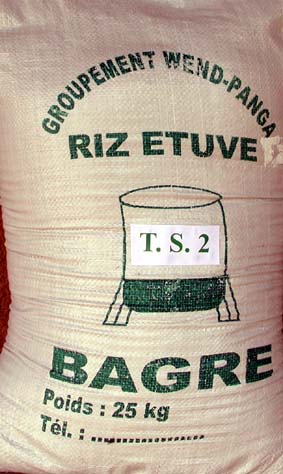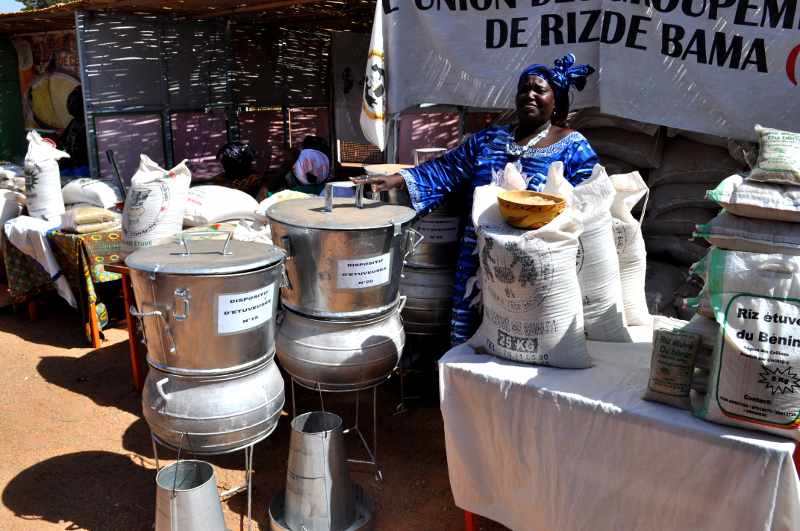Open letter to the Minister of Industry, Trade and Crafts
«Mr Minister, I do not understand you »
Mr Minister
Some time ago, in October last year, I had the pleasure of hearing you say publicly, at the first edition of the « Koudou du Faso » ( Golden Ladle of Faso, a presentation of local cuisine) that the promotion of this country’s own products was to be a strong key note in the Government’s policy.
However, a few days ago I read in the daily paper SIDWAYA , that you have set the consumer price for rice produced in Burkina at 300 CFA francs/kg or 7500 francs /25 kg bag in all the larger cities, without any further details - at the risk of undercutting national production and all the efforts undertaken for the advancement of rice made in Burkina. I no longer understand you.
Let me explain:
Already at the beginning of October I was very surprised to read in a press release from your Ministry : « Products of large consumption : rice will be given our utmost attention. »
The communication further read : « The price of rice sold in Burkina (primarily imported rice, as will become evident further on, Ed.note) changes from one variety to another. At present, on most markets in Ouagadougou, ordinary rice (lower quality, containing 25% broken grains) costs 18 000 CFA francs/50 kg, whereas medium quality rice (15-20% broken grains) costs 19 500 francs. Superior quality (5 – 10 % broken grains) costs 19 500 – 20 000 francs) /50 kg. Luxury rice with less than 5% broken grains sells for 4 000 francs /5 kg. Local rice is sold at 15 000 / 50 kg and 7 500 /25 kg. Prices in areas outside the larger cities vary depending upon transport costs.” (End of quote).
This paragraph raises several queries.
In 2011 it was, as far as I know, only in the shops selling subsidised local rice from the SONAGESS (Société Nationale de la Gestion du Stock de Sécurité) that one could buy rice for 7 500 francs /25 kg. At the time of writing this the Ministerial Order has not yet become known and white rice produced in Burkina costs about 9 000 francs and the package of 1 kg is most of the time sold for 400 francs. Is it really necessary to undercut the price of local rice and thereby possibly endanger the country’s national production? Is this really preparing for the future, while experts tell us that world market prices are likely to increase even further in the next few years?

 This is not all. Specialists on Burkina rice distinguish between different varieties (more than ten), not known by all consumers. But more and more customers are demanding the TS 2 variety (which some already call « perfumed Taiwanese rice, because the first seeds of this very popular rice were offered by the Co-operation Department of Taiwan). Producers are now increasingly responding to this consumer preference, even during the dry season, since the TS 2 has a higher resistance against the September winds than other rice, such as the Tox variety. They do this in the hope of « selling quality » at a profitable price. Why refuse the same criteria for Burkinabè rice as those adopted for imported rice, in other words allowing the price to vary according to quality (rate of broken grains, taste, purity…)
This is not all. Specialists on Burkina rice distinguish between different varieties (more than ten), not known by all consumers. But more and more customers are demanding the TS 2 variety (which some already call « perfumed Taiwanese rice, because the first seeds of this very popular rice were offered by the Co-operation Department of Taiwan). Producers are now increasingly responding to this consumer preference, even during the dry season, since the TS 2 has a higher resistance against the September winds than other rice, such as the Tox variety. They do this in the hope of « selling quality » at a profitable price. Why refuse the same criteria for Burkinabè rice as those adopted for imported rice, in other words allowing the price to vary according to quality (rate of broken grains, taste, purity…)
Why does the Government apply a distinction between different types of rice for the imported product, but not for domestic rice ? The same care should be taken with rice produced in Burkina.
 In addition I believe that the women workers, the « étuveuses », who are toiling to offer rice of good quality (even though progress can still be made) by parboiling a non negligible part of the national production of paddy rice, would have liked to see a distinction being made between « white rice » (milled directly from paddy rice) and parboiled rice
In addition I believe that the women workers, the « étuveuses », who are toiling to offer rice of good quality (even though progress can still be made) by parboiling a non negligible part of the national production of paddy rice, would have liked to see a distinction being made between « white rice » (milled directly from paddy rice) and parboiled rice
To tell the truth I am not sure that the parboiled rice is included in the Ministerial Order on “decision on the price on domestic rice ». This is in fact rice that has undergone processing locally. The order from the Ministry does not make reference to this additional work, neither does it mention its effect on the consumer price. I think it would be good if a subsequent ministerialorder could specify that parboiled rice is due to have a 20 % rate than white rice, on account of the work (and investment) by the women workers and the higher nutritional value of parboiled rice.
Mr Minister, I am well aware that you yourself and your government are committed to the fight against rising costs of living. But is it really necessary to undress Paul to clothe Peter? I have no doubt that you are sincere when you declared at the Koudou du Faso : « The advancement of local products will be one of the strong key points in the policy of Burkina Faso ». That is why I hope that you will take this letter into consideration and that very soon it will be not only « local rice » that will be given much of your attention, but also the producers and the women workers processing it. As well as Burkinabè consumers, who no longer go by the price of food, but also by its quality.
Yours truly
Director, SEDELAN
Maurice Oudet
Koudougou, January 9th, 2012









